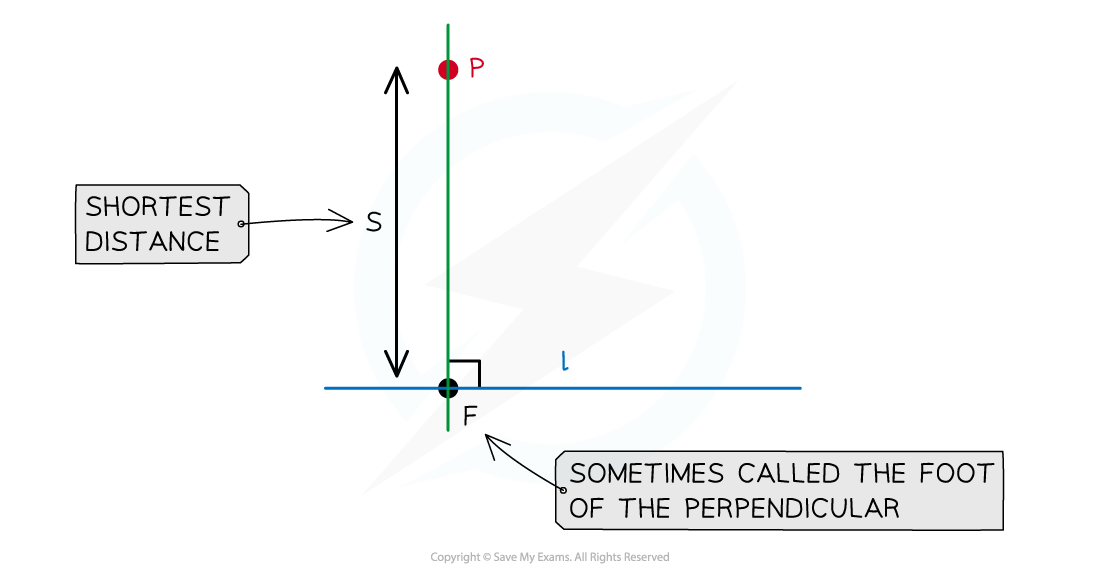Shortest Distance Between a Point and a Line (DP IB Applications & Interpretation (AI)): Revision Note
Did this video help you?
Shortest distance between a point and a line
What is the shortest distance from a point to a line?
The shortest distance from any point to a line is always the perpendicular distance
Let
be a line with equation
Let
be a point that does not lie on the line
The shortest distance between the point and the line is sometimes referred to as the length of the perpendicular

How do I find the shortest distance from a point to a line?
For example, consider
the line
the point
STEP 1
Sketch a diagram showing the pointon the line
that is closest to the point
The vector
will be perpendicular to the line
The point
is sometimes called the foot of the perpendicular
STEP 2
Use the equation of the line to find the position vector of the pointin terms of
STEP 3
Use this to find the displacement vectorin terms of
STEP 4
Set the scalar product of the direction vector of the lineand the displacement vector
equal to zero
STEP 5
Solve the equation to find the value ofSTEP 6
Substituteinto
and find the magnitude
How can I use the vector product to find the shortest distance from a point to a line?
The vector product can be used to find the shortest distance from any point to a line on a 2-dimensional plane
The formula for the shortest distance is
is an equation of the line
is the point not on the line
is any point on the line
Examiner Tips and Tricks
This formula is not given in the formula booklet.
Worked Example
Point A has coordinates (1, 2, 0) and the line has equation
.
Point B lies on the such that
is perpendicular to
.
Find the shortest distance from A to the line .
Answer:


Unlock more, it's free!
Did this page help you?